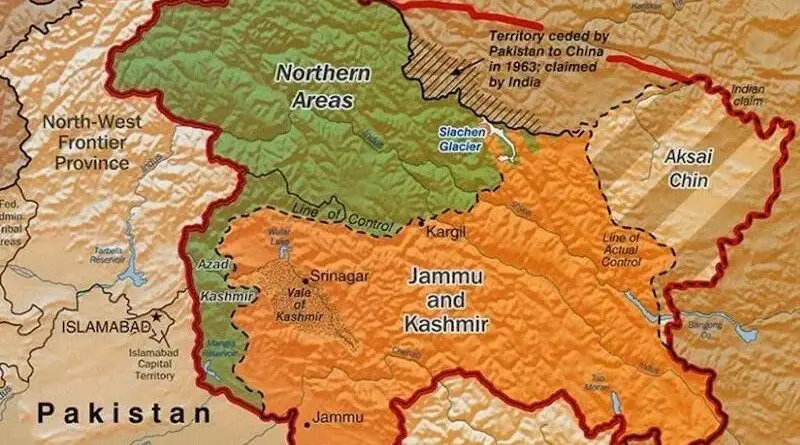Can Diplomacy With Pakistan Work? – OpEd
By Nishant Rajeev*
The current tensions along the Line of Control (LoC) in Jammu & Kashmir are at an unprecedented level. Cross-border firing and shelling have become all too common and, as always, the blame game is on.
This is a drastic shift from our earlier policy of strategic restraint and diplomatic engagement. This policy was previously followed due to the Gandhian principle which formed the foundation of our foreign policy and strategic thought. Although this has created an image wherein India is a responsible belligerent in the Kashmir conflict, committed to peace and tranquillity, on the world stage, it hardly helped us solve any of our problems. It failed to reduce tensions along the border or combat cross-border terrorism.
At this juncture where we are on the verge of undergoing a major policy shift with respect to Pakistan, it may be prudent to review our previous policy before committing to a path that we necessarily can’t control.
Although Prime Minister Narendra Modi was considered a hardliner, he went to inordinate lengths to find common ground with Pakistan. His inaugural ceremony was just the beginning after which came the Ufa declaration and the Lahore stopover. However, both incidents were followed by horrific terror attacks on our soil namely Gurdaspur and Pathankot.
Even after the Pathankot attack the Government allowed an investigative team from Pakistan to visit the Indian Air Force base and co-operate in the investigation. Such a concession was made on the assumption that Pakistan would, in turn, allow our NIA team to visit Pakistan and interrogate Hafiz Saeed. But unfortunately, this was not the case.
A study of the history of India-Pakistan relations will confirm this trend.
The historic Lahore summit of 1998 was followed by the Kargil war in 1999. Just as the Confidence Building Measures were kicking in in 2004 (after the 2003 ceasefire agreement) we endured the Mumbai attack in 2008.
But to really understand how difficult dialogue has been one needs to look at efforts from the Pakistan side. Erstwhile President Pervez Musharraf had come out with a four-point agenda to solve the Kashmir issue once and for all sometime in 2006.The four-point agenda was mainly formulated through back channel talks between the two governments from 2003-2007.
This plan was based on four pillars — gradual withdrawal of troops, self-governance, no changes to borders and joint supervision. The plan also came when Musharraf decided to crack down on jihadists on Pakistani soil during the US’s war on terror. Such a stance against jihadists was a huge gamble on Musharraf’s part and eventually led to his fall. Although the move to impeach him was mainly political, one cannot underplay the role the Islamists and jihadists had in the movement.
After the Lal Masjid siege, Jaish-e-Mohammed Chief Masood Azhar openly denounced Musharraf. Other Islamist groups such as the Jamaat-e-Islami were against his re-election. Jamaat-e-Islami even filed one of the many petitions in the Supreme Court requiring him to step down as army chief before he could stand for re-election. But the biggest indicator is probably the actions of the Muttahida Majlis-e-Amal (MMA), a coalition of right wing Islamist groups who were openly opposed to Musharraf and his policies on and support for the US-led war on terror.
As pressure from various sections mounted, Musharraf was eventually forced to resign and went into exile. President Musharraf’s fall from power probably highlights the difficulties of putting in place policies that are against the interests of the various jihadist groups which includes a “deal” with India on Kashmir.
Vested interests have severely compounded any peace process in the case of Kashmir. A solution on Kashmir would become an existential threat for various groups in Pakistan. In the current scenario, the people who would rise to prominence in case a solution is reached on Kashmir would be the political separatists in Kashmir such as Syed Ali Shah Geelani, Yasin Malik and Mirwaiz Umar Farooq. People like Hafiz Saeed and Masood Azhar would have a limited role to play in a post-conflict scenario in Kashmir.
Unlike the Taliban in Afghanistan who many in the Pakistan military believe should be accommodated in the government, no such groups can be seen coming to power in Kashmir. It would also see the Pakistan military cede much of its powers to the civilian government as its importance will be subdued given how the likelihood of military confrontation will drastically reduce.
India-Pakistan relations on the diplomatic level will also undergo a major overhaul. With Kashmir out of the picture, the focus will probably be solely on terrorist organisations in Pakistan who had taken part in terror activities in the past like 26/11 in 2008. India will most likely push for their extradition and, with nothing to bargain for, Pakistan may concede. This is something no terrorist group in Pakistan wants to see happen.
Given how peace between India and Pakistan is a grave threat to such groups, it would be in their best interest to vehemently oppose any ‘deal’ on Kashmir. For them, an armed insurgency, or war, would increase their influence and role in the Kashmir conflict. At the end of such a conflict, they may be seen more favourably in Kashmir and may receive immunity for all the terror atrocities they have committed in the past.
Hence any diplomatic moves to end the conflict will certainly invite a response from the military-jihadi complex which more likely than not will undermine the peace process. Though diplomacy would be the ideal way to end the conflict, it is not apparent how pure diplomacy can bring an end to the Kashmir conflict. We may be entering uncharted territory as we go ahead with our new policy, but it seems like our options may be limited.
*Nishant Rajeev is a GCPP course student at the Bangalore-based Takshashila Institution, a public charitable trust engaged in public policy research & education.Comments and suggestions on this article can be sent to [email protected]

